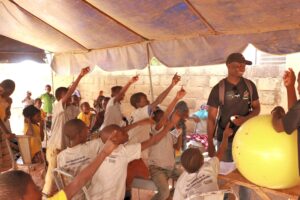There is now a new paradigm in astronomy where data from large missions have become accessible to anyone with good computer hardware and access to the internet. In many ways, this has opened up frontier science to those institutions and countries who have not been in the scientific mainstream. However, there is still a significant bar to entry in that the techniques to access and analyze the data can be opaque and poorly documented. We propose to introduce astronomical data analysis into the university curriculum with the goal of enabling students and faculty to participate in new initiatives, including the upcoming SKA partnership of which Zambia is a partner. This is particularly relevant now that the Southern African Regional Node has been established at Copperbelt University and we expect that the modules and teaching techniques developed here will be applicable to the entire region. This will have two parts. The first is an introduction to the software and bibliographic tools, including but not limited to Aladin, Simbad, ADS and GDL, used in everyday astronomical data analysis and the second is an introduction to the available data, primarily SDSS and GALEX. The Project Lead has been involved with big data both in his personal research and in disseminating the techniques through the university system. He will spend approximately 6 months spread over two years at Copperbelt University with visits to other institutions in the Southern African region as required. Big data has now become part of the lexicon of all fields of science and business and astronomy, especially, has been in the forefront of creating and utilizing huge multi-parameter data sets. The skills developed in handling and in interpreting these data sets are applicable to many different professions where critical thinking and a basic understanding of real-world data are important.








